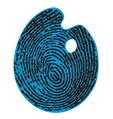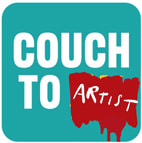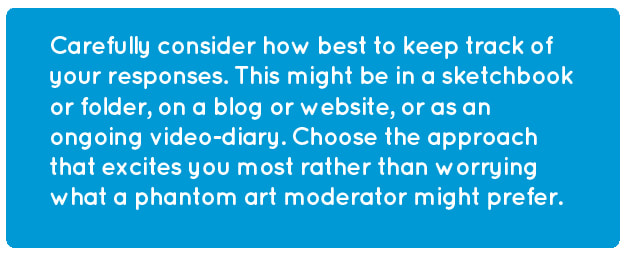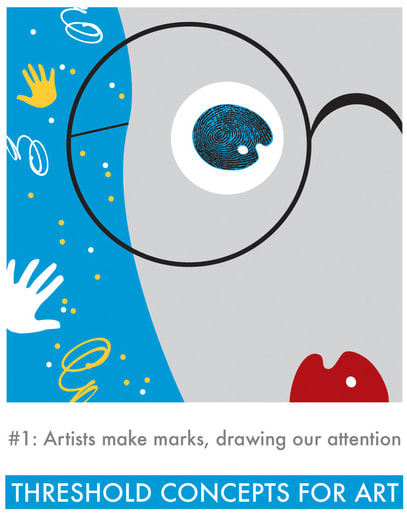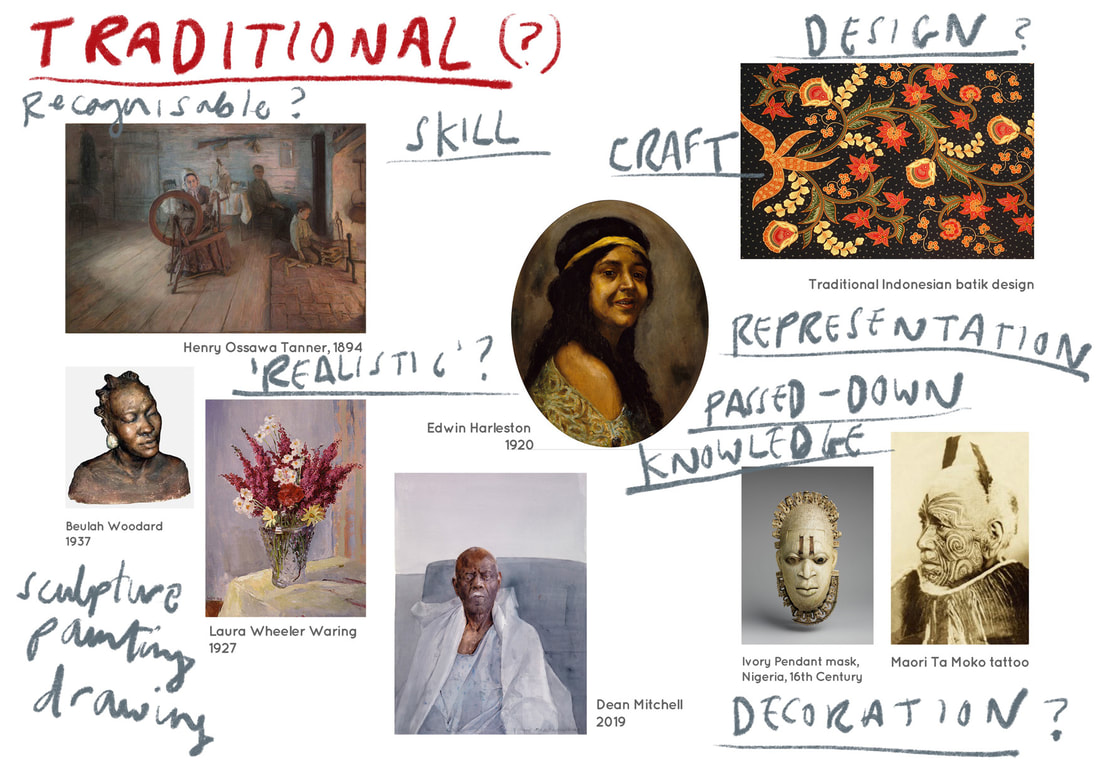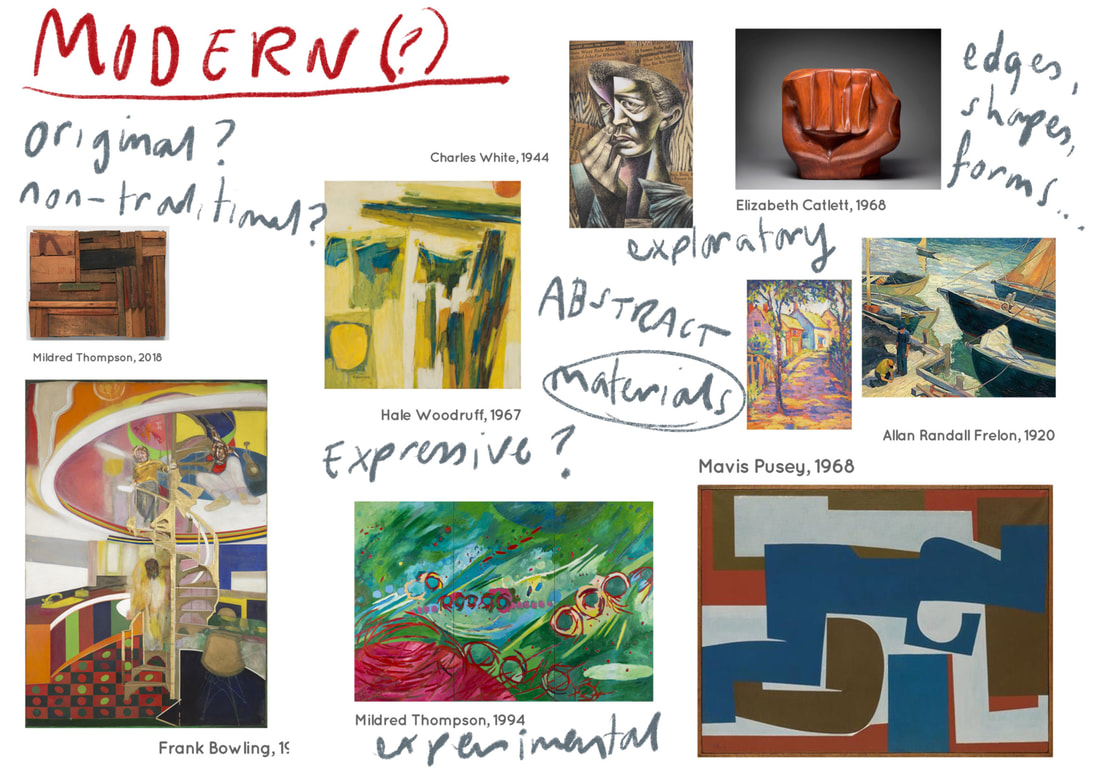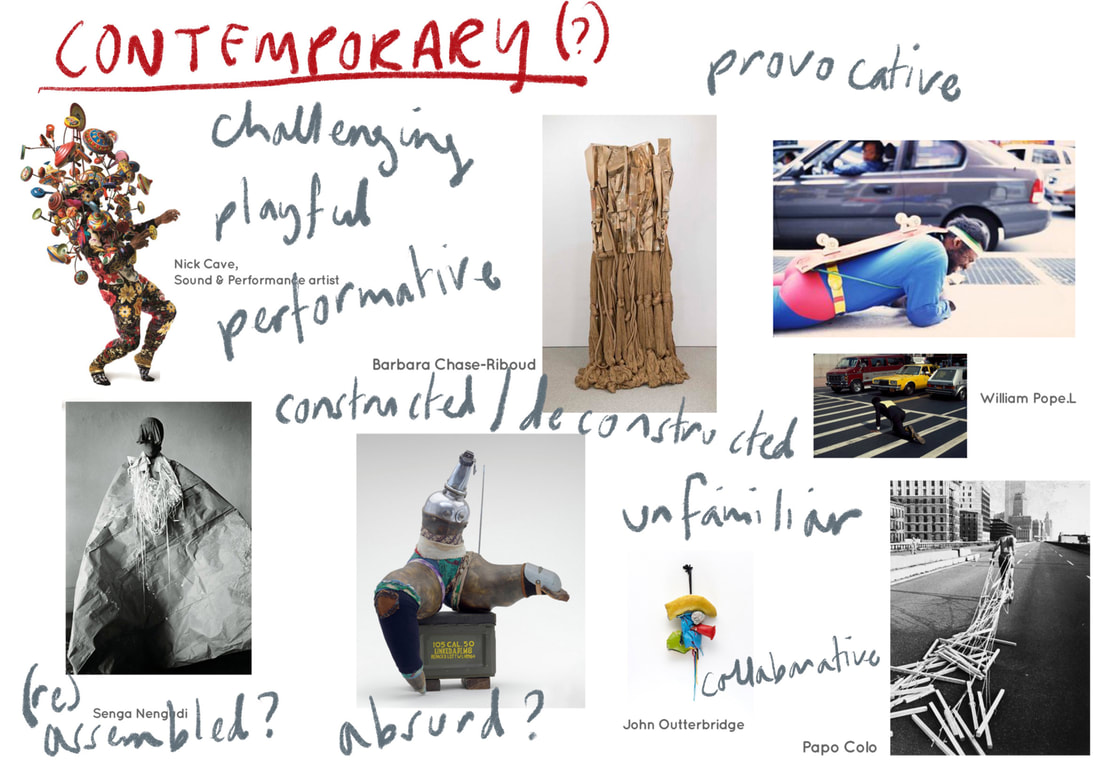|
Task 1 connects with Threshold Concept 1. It is an opportunity to consider: the type of marks you like to make, the art you want to produce now and in the near future, and the words that might help you to understand and articulate this in more depth.
You will complete: 1. a range of reflective notes and sketches as you read, question and research. (suggested time: approx 1-2 hours). 2. a text-inspired/influenced response (approx 2-4 hours). |
In these unstable and uncertain times, we need to look to the things that unite us – the things that show us the world in all of its variations - and for that, we need artists Audrey Azoulay |
|
TASK 1 ADDITIONAL PROMPTS & RESOURCES
So, what type of marks do artists make?
Threshold Concept 1 reminds us that artists can make many different types of marks, and for many different reasons. We might describe types of marks through their:
- Visual qualities - for example: a flowing line, a brightly coloured shape, a textured brush stroke...
- Mediums or techniques - for example: a pencil sketch, a sculpted form, a recorded performance...
- Genres or subject matter - for example: a portrait, a landscape, a still-life...
- 'Movements' or shared philosophies - for example: Impressionism, Cubism, Expressionism...
The reasons why artists might be moved to creative action are numerous, often highly personal (but not always), and subject to change with experience and time. Artists might produce art in response to experiences and emotions; as a means of engaging with the world; as a form of learning, communicating, questioning or challenging ideas and conventions. Artists also produce work for others, for income and profit, for decoration and design...
Consider the following combinations of images below and how they have been ordered under the headings 'Traditional', 'Modern' and 'Contemporary'.
About' Traditional'. 'Traditional' art might be considered artwork where specific skills, techniques and/or styles are established within a culture and have been taught and passed on. For example, 'representational', 'figurative' or 'realistic' works such as drawings, paintings or sculptures might often be described as 'traditional'. But it's worth keeping in mind that contemporary artists also play with our expectations of these, and traditions are subject to change. 'Traditional' art might also be taken as craft-based, designed or decorative. Some artworks considered traditional might also be described as abstracted (generally considered a 'Modern' term) or be comparable to contemporary forms, such as installations or performances.
About 'Modern'.'Modern' art might be considered as a challenge to 'traditional' approaches. In art history terms, the 'Modernist' period tends to refer to the period of time from late 19th Century to mid 20th Century. This was a period of great change, a time where many artists challenged traditional techniques and ways of perceiving and recording. Movements such as Impressionism, Post-impressionism, Cubism, Futurism, Expressionism and Abstract Expressionism (along with many others) might be described as 'Modern'. But many artists today continue to explore ways of looking and recording (as did some artists prior to 19th Century). It might be argued that some of these now-established Modernist approaches have or will, with time, become considered 'traditional'.
'Contemporary' art is a complex soup. The 1950s saw a wider emergence of ways of making art that might be considered more self-aware or self-referencing, ironic, playful, troublesome, less-obviously skilled even. Pop Art (for example), provides many examples of this. There was also an increase in the appropriation of existing objects as art - albeit a practice established much earlier by artists, most famously Marcel Duchamp. Art also moved increasingly out of traditional gallery and studio spaces. 'Happenings', events, collaborations and 'performances' emerged to challenge - play with, even - the notions of 'traditional' and 'modern'. In timeline terms, this shift might be described as 'Post-Modern', but of course many of these ideas and actions had been explored previously within different contexts. (Art movements such as Dada and Surrealism, for example, had embraced performance, absurdity and assemblage; ancient tribes, such as The Dogon of Mali created fantastic costumes for collaborative performances, ceremonies and rituals).
CONTEXTUAL QUESTIONS
- Which of the three categories, above - Traditional, Modern, Contemporary - appeal most to you and why? (How do other forms of art and design - applied arts in particular e.g. architecture, illustration, cartoons and graphic novels, fashion, animation - sit within or beyond these distinctions?
- Which styles/approaches/techniques seem most fitting to respond to your recent experiences - of COVID-19, lockdown, or other events of global or personal significance?
- All of the artworks above have been produced by artists from within historically underrepresented groups in art history. Re-considering how art (hi)stories are shared is an important step towards fairer representation. How might the type of marks that artists make raise issues, challenge conventions and provoke change or speak truth to power?
TASK 1 SUMMARY
- You should have completed a range of notes in response to the information above. This might also include wider research and experimental sketches.
- The notes, words, quotes and insights you have gathered should now inform your own creative response to this question: What type of marks should an artist make at this time in history, and why?
- Your response might be deliberately 'traditional, 'modern' or 'contemporary' in style or concept.
- Your response might also address a specific issue, personal or global, from this moment of time.
- Your response should be personal and intuitive and not constrained by fear of failure, the thoughts of others or concerns of perfectionism.
